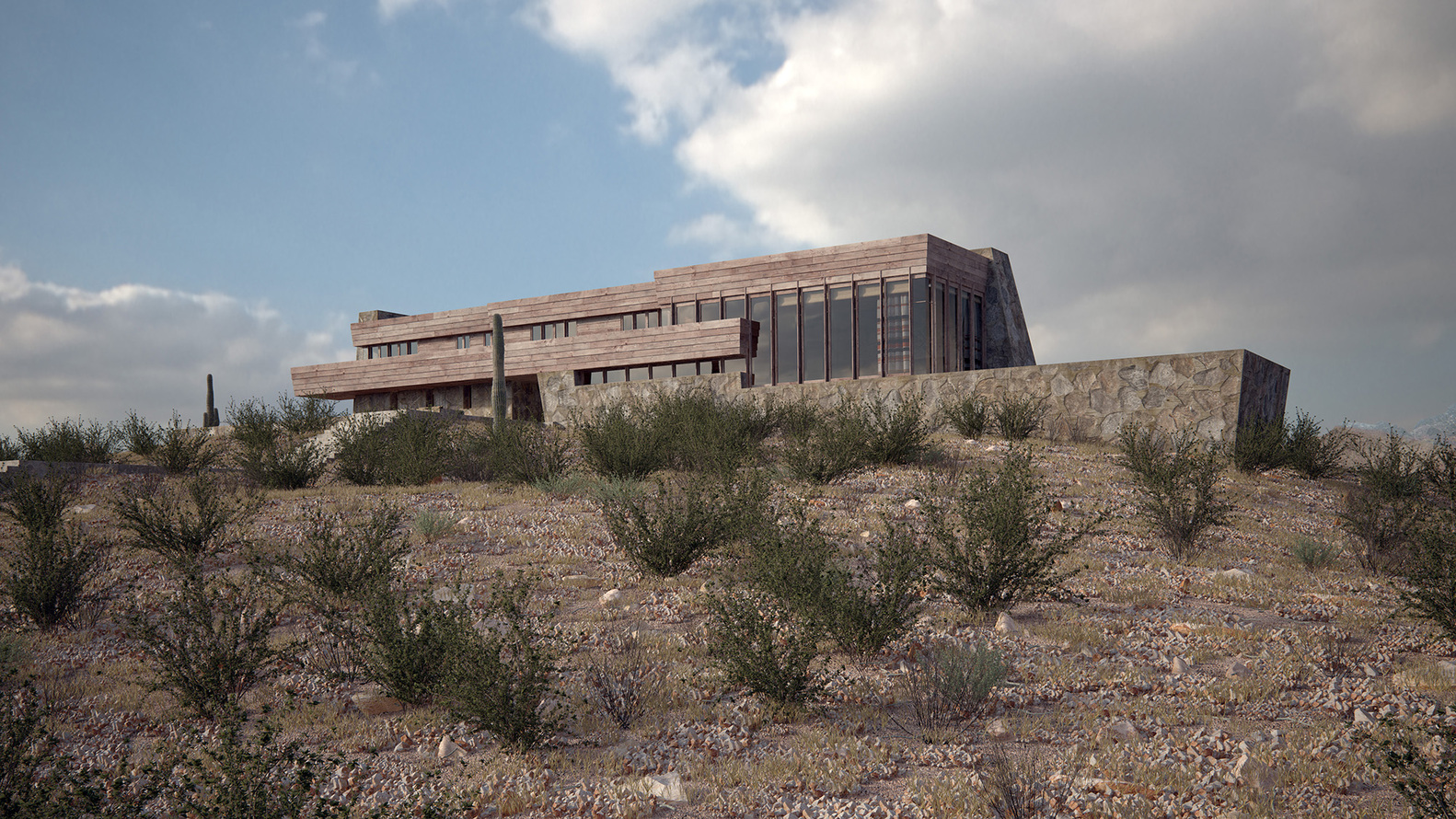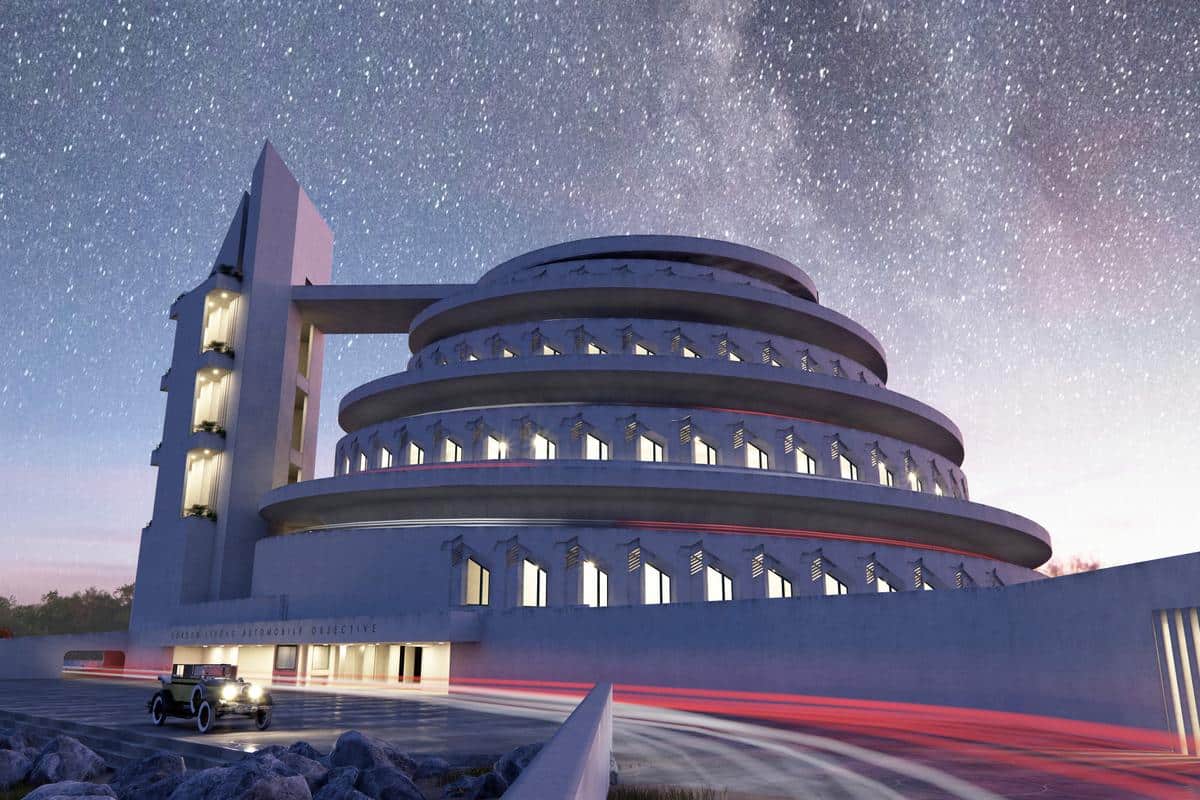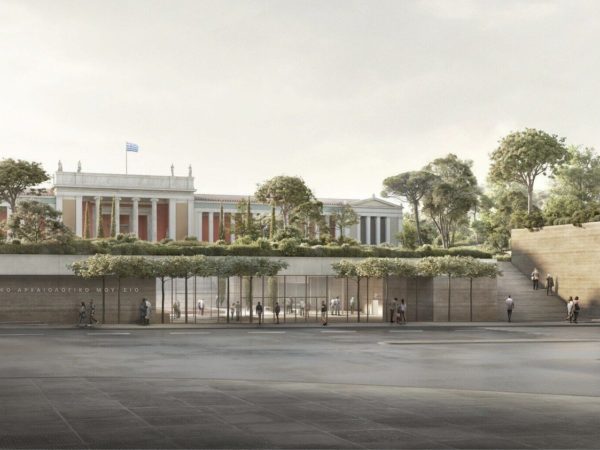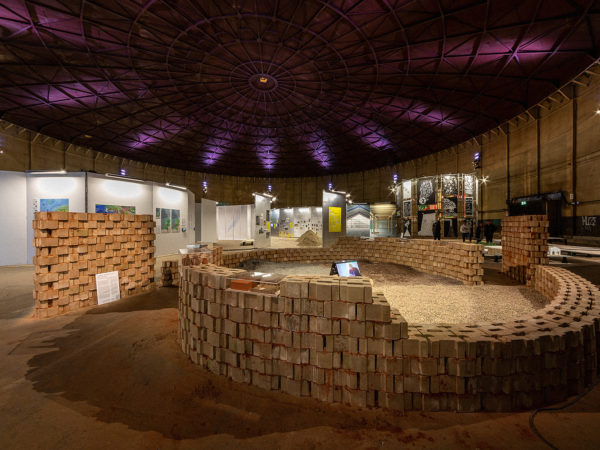Remembering Frank Lloyd Wright’s legacy through his unbuilt and demolished works
Built or unbuilt, the works of Frank Lloyd Wright, one of the most celebrated architects who redefined American Architecture as we know it, continue to fascinate and inspire people to date. With more than a thousand designs through a prolific career of over seven decades, more than half of the proposals remain unrealized. Nearly six decades after his demise, Spanish Architect David Romero brings to life the unbuilt and demolished works of Wright through his stunning, photorealistic 3D renditions. This was achieved in collaboration with the Frank Lloyd Wright Foundation, an organization that aims to value and preserve the remainder of Wright’s works through continued support.

“While we will never know the true experience of visiting an unbuilt Wright design, these renderings can convey a bit more sense of space and light than the drawings alone,” said Stuart Graff, president & CEO of the foundation. It started off as a personal project for David Romero that coalesced his liking for architectural history and the realm of computer-generated images. Enraptured by the works of this visionary architect since his college days led him on the journey of producing this series of digital renderings that not only honor the memory of Wright but also offer a glimpse into his projects that never saw the light of day. Romero describes it as a long and challenging process that involves creating a 3D structure using original drawings, sketches, and photographs retrieved from the foundation’s archive. The 3D model is further layered with materials, textures, context, and other landscape features to make it appear as close to reality as possible. These meticulously rendered images are produced using software like AutoCAD, 3Ds Max, Vray, and Photoshop.
In today’s environment which is excessively driven by visual media, a lot of places we know about are only through their images although it falls short of capturing the true essence of what it is like to experience the space in its physical form. However, Romero’s endeavor goes beyond the physical experience or construction of the design and illustrates the enduring influence and relevance of Wright’s designs in the larger architectural narrative. When asked about his process of selecting the designs to create he shared “I tried to choose buildings that are relevant within his trajectory as an architect, but Wright was so prolific that only that criterion would leave us many buildings to choose. After that, I simply chose work that I liked.”

Built in 1903, the Larkin Administration Building in Buffalo, New York, Wright’s major public work, revered for its avant-garde design had set a benchmark for many modern office buildings that followed in America. Noted for its many progressive features like glass doors, air conditioning, radiant heating, open plan, and built-in furniture, it was built to serve as an administrative headquarters for the Larkin Company. The misfortunes of the company however led to the demolition of the building in 1950 despite a lot of protests from preservationists. Romero creates 3d renderings of the building and helps resurrect this lost, iconic structure. Another of his renders shows Wright’s proposal for the National Life Insurance Building in Chicago which is a 25-stories high glass edifice with four identical wings. If built, it would have changed the skyline of Chicago with its modern approach of using lightweight materials as a curtain wall that maximizes daylight and natural ventilation.


With limited details available on the unbuilt projects, Romero had to sometimes rely on conjectures for design decisions or refer to some of Wright’s built works or consult experts from the architectural community. Like the design of Gordon Strong Automobile Objective for which he referred to the photographs of the Solomon R. Guggenheim Museum in New York, one of Wright’s most distinguished works. The project was commissioned to Wright in 1924 by a Chicago businessman and was envisioned as a tourist attraction facility that would sit at the summit of Maryland’s Sugarloaf Mountain. As seen in Romero’s renderings, the proposal resembles a circular ziggurat with ramps wrapped around the structure to provide access to automobiles. While it was important to provide the visitors with magnificent views of the surrounding landscape, the building also housed a huge domed planetarium that took up the entire interior space and a roof garden at the top of the spiral. “Wright managed to combine in a single building a sense of something playful with the majesty of an impressive monument. It is a pity that it could not be built. If it had, I think it would be one of his most celebrated designs,” Romero said of the Automobile Objective.

According to Romero the most challenging and extensive was creating the virtual model of Wright’s visionary Broadacre City concept which had its first public exhibition at the Rockefeller Center in 1935. This proposal of a new democratic city would use modern technology, transportation, and communications systems to decentralize the old city and create an environment where individuals can have the space and freedom to flourish. Apart from the original physical model of Broadacre City which was constructed by Wright and his apprentices, Romero referred to drawings that Wright made to illustrate his book, The Living City.
Unlike any of Wright’s earlier works, The Illinois is a 528 stories high skyscraper proposed in 1956 for the city of Chicago. The renderings provide a glimpse of its innovative design which was envisioned to encompass more than 18 million square feet and accommodate more than 100,000 people, like ‘a city in the sky’ as Wright called it. Other renders include the proposal of the Crystal City (Washington, DC), Trinity Chapel (Norman, Oklahoma), and Rose and Gertrude Pauson House (Phoenix, Arizona).


David Romero, The Illinois by Frank Lloyd Wright Foundation
While this series of 3d renders by Romero has provided a deeper understanding of the oeuvre of Frank Lloyd Wright, they play a crucial role in the architectural discourse as concepts and ideas that could not be realized due to several reasons. As one continues to learn and be inspired by the works of Wright, these renders help in remembering and continuing his legacy.

Text by Khusboo Patel
Image Credits: David Romero, Frank Lloyd Wright, Frank Lloyd Wright Foundation
https://www.instagram.com/WrightTaliesin/?hl=en
https://www.instagram.com/_frank_lloyd_wright_/tagged/?hl=en





